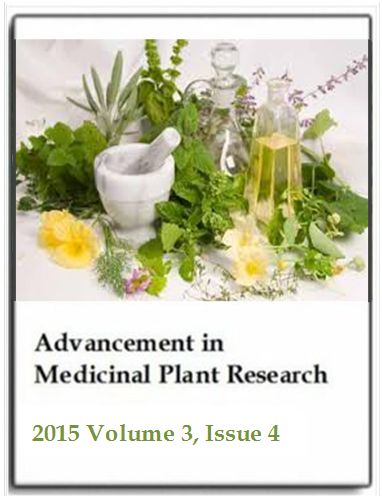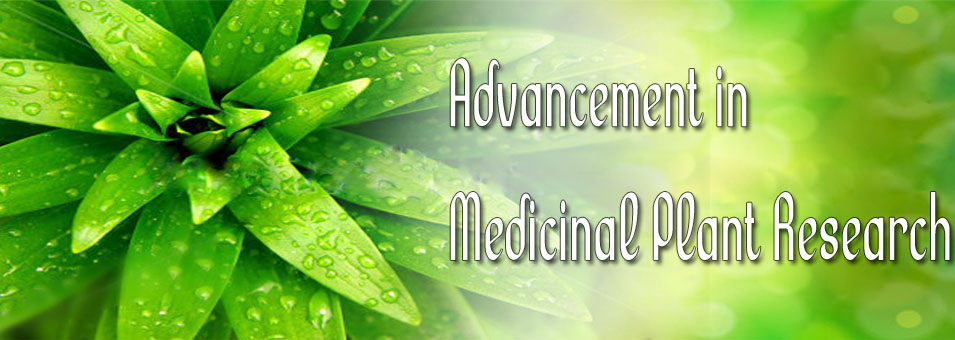Antibacterial activity of the leaf extract of Piliostigma thonningii against Salmonella typhi and Shigella dysenteriae
Ewansiha J. U., Okafor A. C., Doughari J. and Busari M. B.Advancement in Medicinal Plant Research
Published: October 20 2015
Volume 3, Issue 4
Pages 151-154
Abstract
The cold maceration, qualitative phytochemical analysis and agar well diffusion methods were applied to investigate the antibacterial activity of Piliostigma thonningii using hexane and water as extracting solvents. The phytochemical analysis reveals the presence of tannins, terpenines, flavonoids, alkaloids, steroids and phenol while glycosides were absent. Tannins, terpenes, alkaloids and phenol were present in both solvent extract while flavonoids, glycosides and steroids were absent in the hexane extract. Sensitivity result shows that the aqueous and hexane extracts had activity against the test organisms with mean zones of inhibition in millimeter of 17.33 ± 0.57 and 15.33 ± 1.15 at 30 mg/ml against Salmonella typhi, while the mean zone of inhibition against Shigella dysenteriae were 14.33 ± 0.57 and 11.00 ± 1.0 at 30 mg/ml for aqueous and hexane extracts, respectively. The least inhibition zones, 9.66 ± 1.15 and 11.00 ± 1.0 at 20 and 30 mg/ml respectively of the hexane extract were recorded against S. dysenteriae. The leaf extract exhibited the lowest MIC (1.8 mg/ml) against S. dysenteriae as compared to 15 mg/ml against Salmonella typhi. Summarily, the activity of the plant extract might be concentration dependent and therefore, based on the result of this research work a higher concentration and purification of the crude extract is recommended to achieve a considerable antimicrobial activity.
Keywords: Piliostigma thonningii, terpenines, cold maceration, Salmonella typhi, hexane.
Full Text PDF
